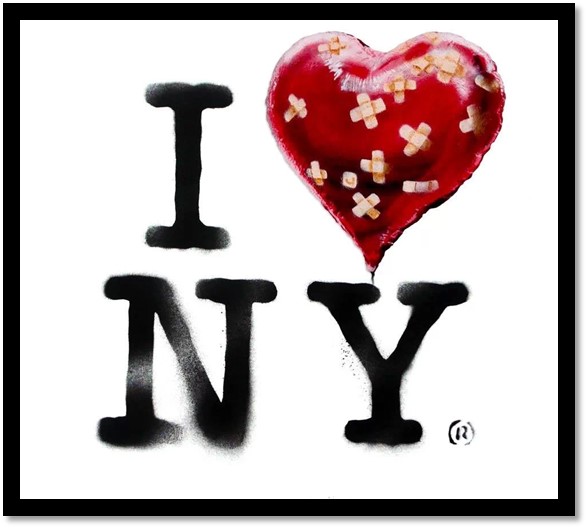How to Be…Banksy-ed
For the month of October I walked around like this:

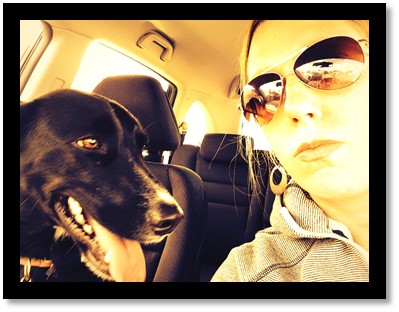
A smug little grin, earphones in, Fable by my side and speed-walking (or nervously driving) the streets of New York hunting for the newest Banksy.
On the last day of October, after arriving fifteen minutes too late to the last Banksy, I looked like this:

Had I left the Bronx fifteen minutes earlier I might have seen the last day of the show. Instead I posed for ridiculous pictures with the previous day's Banksy and made new friends.
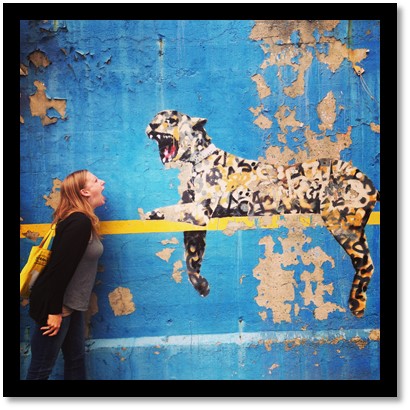
I figured that A) I could take my time because he'd painted in a space that wasn't easily accessible to potential defacers and 2) it was blocks from my house which clearly meant the universe WANTED me to bask in the final day of Banksy.
Wrong.
This was the image posted on Instagram the last day of the show, and thus I thought I was safe. No way could anyone ruin that.

But when I got there, it looked like this:

That remarkable bastard Banksy hadn't used paint that day. The final day of the show was a homage to the street artists of New York City. It was an inflatable throw-up on the side of the Long Island Expressway. It was balloons.
The final piece in the last day of Banksy's tremendous art show was gone within two hours. First there'd been attempted thievery by two Banksy "fans" (who had also stolen stuffed animals from the Farm Fresh truck) but they'd been thwarted by the people watching in horror as this idiot tried to abscond with a stream of huge balloons. He was tackled, police were called and by the time I showed up, this was happening.

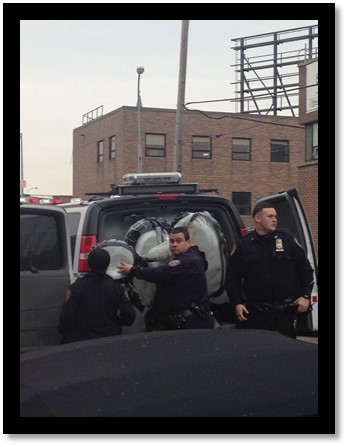
As I walked away from the scene I was devastated. All I'd wanted was to see the final Banksy piece—to wrap up what had been an amazing month of art and community and all I'd seen was an angry group of fans, befuddled cops and some balloons on the side of the street.
Later, a friend pointed out that perhaps this was all part of the plan. After all, the NYPD had been hunting Banksy for the entire month, and this last piece was not only obviously more impermanent than most of his pieces, but also a tip of his hat to the city that had hosted him the last month. Perhaps this was a calculated Banksy move, putting his hands up in the air and allowing the police to "capture" him. Or at least his balloons.
And this—this brilliance and subtlety was the part of the show that blew my mind. I loved the art, was blown away by the month of work I'd witnessed, but what made this an extraordinary experience was the subtext beneath the art, the conversations that sprung up on the street amongst strangers and the beautiful little community that formed during the show.
"Better Out Than In" was something atypical in the art world—a show hosted entirely on the streets of a city. From the first day, with a piece entitled "The Street is in Play" he turned New York City into a playground, a city-wide scavenger hunt, where the prize was art.
The sign reads "Graffiti is a Crime" and now looks like this:
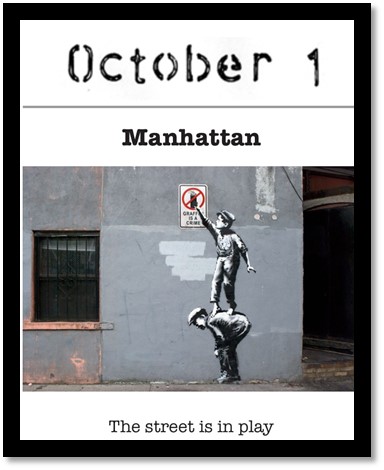

As an artist this grabbed hold of my heart and wouldn't let go. I love Banksy, and have for years, but now this was more than admiration and intrigue, this was now a full-fledged love affair filled with awe, and respect for an artist who enthralled and inspired me.
He's a controversial artist and a lot of graffiti artists refute his use of stencils, but I think his art goes so much deeper than a stencil on a wall. There's nearly always subtext to his work, and though he'd hand us a hint by way of audio accompaniment for the day's piece, or within the title of the work—more often than not he'd allow us to form our own opinions, to take what we could, would and wanted to from what he gave us.
While he's seen tremendous success in his stencil work, and where you could argue most of his fame arises from, he refuses complacency, always challenging himself, trying something new and learning. His garden truck, farm fresh truck, and mixed media work may have been disappointing or confusing to some but to me they signaled an artist always in search of ways to stretch his abilities.
At the very end of the residency, Banksy, in his final audio accompaniment said that the goal of the residency had been "to inspire at least one child to pick up a can of paint" though he adds that "this would be statistically disappointing given the amount of work he'd put in." Clearly tongue in cheek but also something I witnessed firsthand.
The sheer artistry of his McDonald's sculpture, particular the reference to the Greek God Hermes, was unreal. But it wasn't my favorite. Regardless, I trekked up to the Bronx, a place I'd only gone for a baseball game, and walked the streets of the Bronx, a fish out of water, in search for this sculpture/performance piece.
When I made it there, a few of the Banksy regulars were out but for the most part the crowd comprised of people from the neighborhood including a slew of school-aged children. After about fifteen minutes one of Banksy's crew approached the statue and shoe shine boy and they began to pack up shop. As the crowd followed the crew to the van, a little girl tugged on my arm and asked me what was happening.
I told her about Banksy and the show and the art and her eyes lit up. "And he's here?!" She asked. "In MY neighborhood?" I nodded and she squealed. "That's SO cool," she said and then added, "I thought art was only in museums." She walked with me and watched for a while before running off to her friends to report her findings.
I thought about what she said—about art only being in museums and realized that was precisely why I found this particular show so moving. In a city known for phenomenal museums and art galleries, for the most part the admission fees are wildly expensive and not accessible to everyone. Here, Banksy brought everything outside—even his "gallery" work and made sure that anyone could see it.

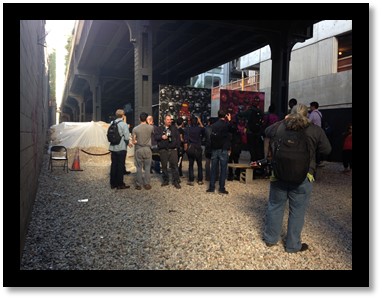
But he did more than that. Yes, he painted the streets of New York with some really amazing art. But he also provoked and challenged, soothed and excited. He got people out onto the streets looking at art, talking about art, arguing about art, protecting art and creating their own art. He inspired a community of people who'd likely never meet otherwise. He paid homage and tribute to the city that graffiti was born in and he left his mark in a city filled with artists looking to do exactly the same thing.
And he gave us more than something cool to look at each day. His art, which sometimes only lasted hours, is almost all gone now. But he left behind a reason to get outside, to talk to each other, to explore parts of the city we don't always go, and to challenge our beliefs and perceptions. To bring art to the forefront of our community and get excited about it.
And then, in the last week of his residency, he gave the city a gift.
Posted later than usual, the photo that appeared on his Instagram feed was this, located at Housing Works in Manhattan.


Months earlier, Banksy had purchased a pastoral painting from this thrift shop that supports a population of people living with AIDS. After "vandalizing" the picture, he donated it back to the shop and opened up an online auction.
The winning bid was over $600,000.
Anyone who calls Banksy a sell-out should really think twice. In a world where artists routinely struggle, work two, three and four jobs just to be able to make art, he is someone who has found rightful success in his work, continues to grapple with the implication of being a successful street artist and remains anonymous, allowing only his work to be in the spotlight.
We are, after all, talking about a man who set up a pop-up shop in Central Park selling original Banksy prints that only four people purchased. A man who created an elaborate reproduction of the Sphinx in a dirty, run-down area of Queens only to watch from the sidelines as people stole it off the street and sold it to the highest bidder.
This isn't a sell-out. This is an artist who not only understands the concept of detachment pretty perfectly, but also continues to make his art for the people, regardless of what they do with it.
This is an artist who inspired me, got me out of my comfort zone and made me discover New York in a way that it would have taken me years to do. He reminded me that as an artist, the best thing you can have is a sense of humor and the most important thing you can do is keep making your art. No matter what. Whether they steal your balloons or criticize you, whether they sell your art for money, call you a genius or threaten to arrest you, your only job as an artist is to keep creating.
And maybe the most important part of this residency was the message he left for us at the end. Banksy said,
Outside is where art should live, amongst us. And rather than street art being a fad, maybe it's the last thousand years of art history that are the blip, when art came inside in service of the church and institutions. But art's rightful place is on the canvas walls of our communities where it can act as a public service, provoke debate, voice concerns, forge identities. Don't we want to live in a world made of art, not just decorated by it?
Where there's art, there's hope. And according to Banksy, there is always hope.
Thanks, Banksy.
